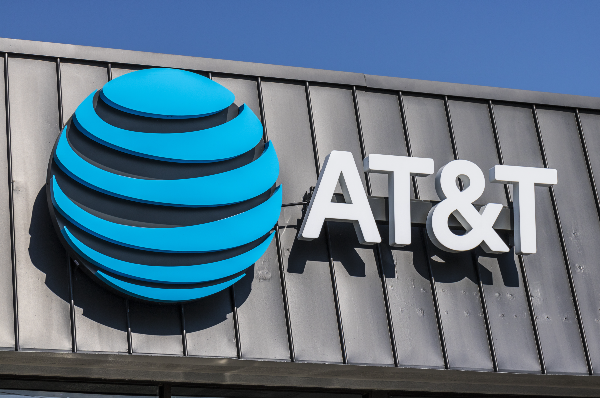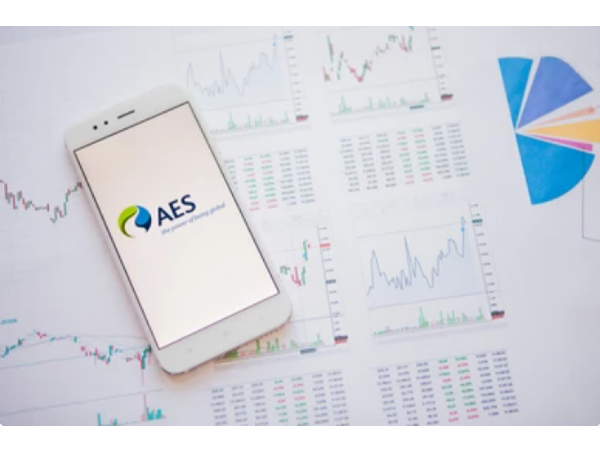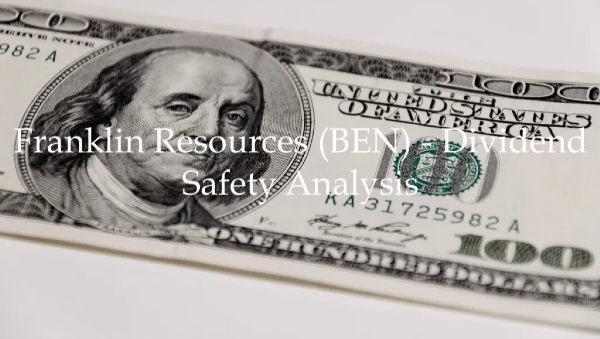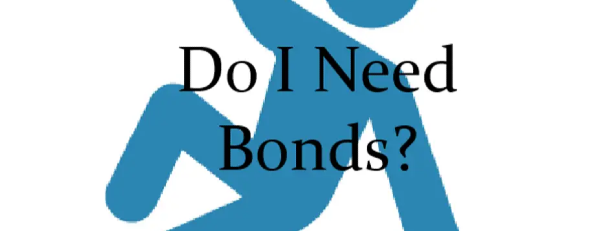I last reviewed one of Canada’s major financial institutions in my January 17, 2023 Scotiabank (BNS) Is A Terrible Long-Term Investment post. In this post, I review The Toronto-Dominion Bank (TD).
NOTE: All dollar values reflected below are expressed in Canadian dollars unless otherwise noted.
After my BNS post, much has happened in the Financial sector.
Silicon Valley Bank (SIVB) and Signature Bank (SBNY) have collapsed. On March 12, the Biden Administration took extraordinary action to restore confidence in America’s banking system. It announced that customers of the failed SIVB would have access to all their money starting March 13. It also shut down SBNY, a regional bank that was also teetering on the brink of collapse. The Biden Administration announced that SBNY’s customers would receive a similar deal thus ensuring that even uninsured deposits would be returned to them on March 13.
Confidence in several other regional banks has also taken a hit in recent days with the larger ‘too big to fail’ banks benefitting from a huge influx of deposits from smaller industry participants.
San Francisco-based First Republic Bank (FRC) has had its credit ratings downgraded deep into junk territory (B+ which is the top tier in the highly speculative category) by S&P Global despite a recent USD $30B deposit infusion from 11 big banks. S&P Global has indicated that this infusion may not solve FRC’s liquidity problems and a further downgrade is possible.
Embattled Credit Suisse is no longer. The situation became so dire that a shotgun wedding with UBS had to be negotiated; Switzerland now has only one globally systemically important bank. Credit Suisse’s predicament was so dire that Swiss authorities had to change the law to avoid a shareholder vote for the deal to proceed.

*Affiliate
If you want to learn more about investing and dividends, then I suggest taking a course. The Simply Investing Course is a good value and fairly comprehensive. It consists of 10 modules and 27 lessons. You get lifetime access and 1-month access to the Simply Investing Report & Analysis Platform. Coupon Code – DIVPOWER15.
The Simply Investing Report & Analysis Platform analyzes 6,000+ stocks with 120 metrics and financial data. It include portfolios, watch lists, dividend income, e-mail alerts, etc. The best part is the list of top ranked stocks based on the 12 Rules of Simply Investing. Coupon Code – DIVPOWER15.
‘It’s common for people to say “I’m going to wait until the dust has settled.” But it is when the knives are falling and the people are most terrified that the best bargains are available – if you wait until the dust settles, the bargains are gone.’ – Howard Marks
The purpose of this post is not to debate whether bailing out poorly managed banks is the right thing to do. Instead, I wish to impress upon investors that participants in the Financial sector are supposed to instill confidence. As soon as there is a lack of confidence in a financial institution, the imminent failure of that financial institution becomes very real.
As witnessed during the Financial Crisis and most recently, financial institutions can implode almost overnight. However, if we look at recent Form 10-Qs and the most recent Form 10-K for SIVB and SBNY, their implosion should have come as no surprise. Quite frankly, it is a wonder they survived until mid-March as there were warning signs these banks were in trouble!
On the other hand, you have companies in other industries that ‘set off alarm bells’ yet they do not go under overnight. A good example is Norfolk Southern Corporation (NSC), the railroad at the center of the February 3, 2023 toxic chemical spill in East Palestine, Ohio. While NSC’s share price has taken a significant hit following this accident, investors do not need to make an NSC investment-related decision within a matter of hours; NSC is still in operation and the Biden Administration has not had to step in to bail it out.
This is why it is critical to assess the risk aspect of any investment…and especially when investing in the Financial sector.
Overview
TD was founded in 1855 when it was a single-branch bank serving grain millers and merchants. To see how it has evolved, you are encouraged to look at its historical timeline. This historical timeline is not quite current, and therefore, you are strongly encouraged to learn about the bank by accessing the 2022 Annual Report.
TD is Canada’s 2nd largest bank from a market cap perspective and a Top 10 North American bank; The Royal Bank of Canada (RY) is the largest Canadian bank.

Acquisitions
TD has grown organically and through multiple acquisitions.
Most recently, TD completed the acquisition of Cowen Inc.; the USD $1.3B all-cash acquisition was announced on August 2, 2022.
On February 28, 2022, TD announced the proposed USD $13.4B all-cash acquisition of First Horizon Corporation (FHN). This transaction still requires regulatory approval. At the beginning of February 2023, TD and First Horizon agreed to extend the date of their merger agreement to May 27 from February 27. However, just 3 weeks after agreeing to the extension, both are unsure when the acquisition will close.
This acquisition is the last deal left pending from a wave of large U.S. bank transactions announced between January 1, 2020 and June 30, 2022. Among U.S. bank deals with an announced value of at least $2B during that time frame, most faced hurdles such as increased regulatory scrutiny, delays and prolonged closing timelines. All, however, eventually received regulators’ sign-off.
The median days elapsed between announcement and close for 13 of these transactions was 326 days. However, the TD/FHN transaction has been pending for over 370 days. I anticipate the deal will receive regulatory approval. However, when the proposed acquisition was announced in February 2022, the deal valued each FHN share at USD $25. FHN shares currently trade in the mid-teens. I, therefore, envision purchase price renegotiations.
TD Bank’s Financial Results
Q1 2023
On March 2, 2023, TD reported Q1 2023 results. Material related to this earnings release is accessible here.
TD reported significantly weaker results relative to Q1 2022. These weaker results were partially attributed to TD recording a provision of ~ $1.6B pre-tax (~ $1.2B after-tax) related to litigation involving the Stanford Financial Group. Once the settlement is approved by the Court, TD will pay ~ US$1.2B to the court-appointed receiver for the Stanford Receivership Estate. Under the terms of the agreement, all parties have agreed to release and dismiss all current or future claims arising from or related to the Stanford matter.
In addition, TD:
recorded a net loss from the mitigation of the impact from interest rate volatility related to closing capital on the FHN acquisition.
recognized a provision for income taxes in connection with the Canada Recovery Dividend
(CRD). On December 15, 2022, Bill C-32, Fall Economic Statement Implementation Act, 2022, received Royal Assent. This bill enacted the CRD and increased the Canadian federal tax rate for bank and life insurer groups by 1.5%. The implementation of the CRD resulted in a provision for income taxes of $0.553B and a charge to other comprehensive income of $0.239B in Q1 2023.
TD also reported a higher provision for credit losses (PCL) in Q1 2023 relative to Q1 2022; PCL for the quarter was $0.69B, an increase of $0.618B compared with Q1 2022.
On the bright side, TD’s investment in The Charles Schwab Corporation contributed $0.301B (US $0.222B) in earnings, an increase of 19% (11% in USD) compared with Q1 2022.
Credit Ratings
If there is one takeaway from the current financial strain experienced by many financial industry participants, it is the importance of having a very strong capital base and a high degree of liquidity. We see that TD’s capital and liquidity metrics are strong which should give investors comfort that it will not be suddenly shut down.

Source: TD – Q1 2023 Earnings Presentation
The following table reflects TD’s credit ratings as of the most recent fiscal year-end (October 31, 2022).

The credit ratings segment of TD’s website reflects these ratings plus ratings for:
- Short-term Debt (Deposits)
- Deposits/Counterparty
- Covered Bonds
Although I rely on credit ratings assigned by rating agencies, I do perform my own credit risk assessment of each company that I analyze. The need to do so is reinforced in that the major rating agencies assigned investment grade ratings to SIVB’s and SBNY’s long-term unsecured subordinated debt and only a day or two before they imploded were the ratings lowered. However, the ratings were STILL investment grade albeit they were the lowest investment grade meaning common shareholders bore ‘junk’ risk.
I typically look at the credit rating assigned to a company’s long-term subordinated debt since this form of debt carries more risk than secured debt. I then consider that as a common stock shareholder, my risk is even greater. Given this, if a company’s long-term unsecured subordinated debt is at the bottom of all the investment grade categories, I am inclined to PASS on investing in a company.
TD’s subordinated debt ratings assigned by Moody’s, S&P Global, and Fitch are all in the middle tier of the upper medium-grade investment-grade category. The AA(low) rating assigned by DBRS Morningstar is one tier lower.
All these ratings define TD as having a strong capacity to meet its financial commitments. However, TD is somewhat more susceptible to the adverse effects of changes in circumstances and economic conditions than obligors in higher-rated categories.
Dividend Metrics
Determining whether to invest in a company by relying solely on dividend metrics is unwise. SBNY is a good example of why.
On January 12, 2023, SBNY declared a USD $0.70 quarterly dividend for distribution on February 10, 2023. This dividend represented a 25% increase from the previous USD $0.56 quarterly dividend. When it declared the dividend, the forward dividend yield was ~2.5% as shares were trading at ~ USD $112. Had an investor acquired shares because of the attractive increase in the quarterly dividend and held these shares until the bank was shut down, the benefit of the attractive dividend would have been negated.
I have no objection to receiving dividend income but any company which distributes a dividend MUST:
easily meet its dividend commitments; and
have the potential to increase the dividend without having to issue debt to service the dividend.
I initiated a Visa (V) position within one month of it becoming a publicly traded company on March 19, 2008 despite the absence of any dividend history. My investment return over the past 15 years has been remarkable and while I have no idea how Visa will perform going forward, I am reasonably confident it will be far more profitable 15 years from now. Essentially, I am not a Visa shareholder for the dividend. I am a Visa shareholder because I anticipate an attractive long-term total shareholder return that will likely be predominantly in the form of capital gains.
In addition to Visa, I hold positions in several other companies that either do not distribute a dividend or whose dividend yield is razor thin. A few examples are Mastercard (MA), Heico (HEI-a), West Pharmaceutical (WST), Danaher (DHR), Berkshire Hathaway (BRK-b) and Copart (CPRT). These companies have the ability to generate very attractive long-term total investment returns that far offset weak dividend metrics.
Naturally, each investor has their respective objectives and goals. If an investor needs dividend income, then TD is worthy of consideration since it has consistently distributed a quarterly dividend that has easily been covered by earnings generated through normal business operations. The firm has paid a dividend for 100+ years.

Source: TD – Q1 2023 Earnings Presentation
Investors are encouraged to read Note 21 – ‘Equity’ in TD’s FY2022 Annual Report. In this note are details about dividend restrictions.
Canadian banks operate in a highly regulated environment. They are prohibited by the Bank Act (Canada) from declaring dividends on preferred or common shares if there are reasonable grounds for believing that the Bank is, or the payment would cause the Bank to be, in contravention of the capital adequacy and liquidity regulations of the Bank Act (Canada) or directions of The Office of the Superintendent of Financial Institutions (OSFI).
TD investors can expect a steady stream of quarterly dividend income that typically increases annually. However, as with all other major Canadian banks, TD was mandated by OSFI to freeze its quarterly dividend during the Financial Crisis; the resumption of dividend increases required OSFI approval.
On a positive note, while the major Canadian banks froze their quarterly dividend, they did not cut their dividend like many US banks.
Looking at TD’s dividend history, we see that the next $0.96 quarterly dividend is to be distributed on April 30. With shares trading at $77.75 at the March 20 close, the dividend yield is ~4.9%. Shareholders are also entitled to a 2% discount if shares are enrolled in TD’s Dividend Reinvestment Plan which slightly improves the dividend yield.

Share Repurchases
Although TD does repurchase shares when the Board deems share repurchases to be an appropriate means by which to reward shareholders, the average diluted number of outstanding common shares in the FY2013 – FY2022 timeframe has barely changed (1,845, 1,845, 1,854, 1,857, 1,855, 1,840, 1,827, 1,809, 1,820, and 1,814 millions of shares rounded).
TD Bank’s Valuation
TD does not issue guidance.
Using a $77.75 share price and the current adjusted diluted EPS broker estimates, TD’s valuation is:
- FY2023 – 13 brokers – mean of $8.91 and low/high of $8.46 – $9.19. Using the mean estimate, the forward adjusted diluted PE is ~8.73.
- FY2024 – 13 brokers – mean of $9.60 and low/high of $7.94 – $10.43. Using the mean estimate, the forward adjusted diluted PE is ~8.1.
These estimates will undoubtedly change if the FHN acquisition is approved and if the purchase price is renegotiated.
If TD’s FY2023 results come in at the lower end of the earnings estimates, we are looking at an adjusted diluted PE ratio of ~9.2.
If FY2024 results come in at ~$9.20, which is roughly the mid-point of the earnings estimates, we are looking at an adjusted diluted PE ratio of ~8.45.
These valuations are reasonable considering TD is a very high-quality bank with attractive long-term prospects.
Final Thoughts on TD Bank (TD)
For the sake of full disclosure, TD was my 12th largest holding when I completed my January 2023 Investment Holdings Review. There are undoubtedly changes in the rankings subsequent to that review, however, I am reasonably confident TD is still a top 20 holding.
In my January 17, 2023 BNS post, I wrote that investors would be wise to focus on investing in great companies; I consider TD to be a far superior long-term investment than BNS.
When we look at how TD has performed relative to its peer group in Canada and North America over various timeframes, it has performed extremely well.

Source: TD – Q1 2023 Earnings Presentation
While the uncertainty surrounding the FHN acquisition hangs overhead, I envision the appropriate regulatory approvals will be provided. Given the financial predicament many US regional banks currently face, I think it would be foolish to decline this transaction. TD has an excellent reputation and to deny this transaction would raise so many questions as to why approval is denied when approval was granted to the other 13 transactions that were announced between January 1, 2020 and June 30, 2022.
In my opinion, the timing of the current challenges amongst US regional banks is fortuitous because it provides TD with a window of opportunity to renegotiate the FHN purchase price. I consider this to be a good time to acquire TD shares and I have just purchased a few hundred additional TD shares for a young investor who is on the path to achieving financial freedom.
Naturally, nobody can accurately predict short-term share price behaviour. Therefore, should TD’s share price decline from the current level, I recommend acquiring additional shares on weakness.
Another article by Charles Fournier is A Look At Dividend Champion Jack Henry & Associates.
Author Disclosure: I am long TD, RY, and BNS. I disclose holdings held in the FFJ Portfolio and the dividend income generated from the holdings within this portfolio. I do not disclose details of holdings held in various tax-advantaged accounts for confidentiality reasons.
Author Disclaimer: I do not know your circumstances and do not provide individualized advice or recommendations. I encourage you to make investment decisions by conducting your research and due diligence. Consult your financial advisor about your specific situation.





























I last reviewed one of Canada’s major financial institutions in my January 17, 2023 Scotiabank (BNS) Is A Terrible Long-Term Investment post. In this post, I review The Toronto-Dominion Bank (TD).
NOTE: All dollar values reflected below are expressed in Canadian dollars unless otherwise noted.
After my BNS post, much has happened in the Financial sector.
Silicon Valley Bank (SIVB) and Signature Bank (SBNY) have collapsed. On March 12, the Biden Administration took extraordinary action to restore confidence in America’s banking system. It announced that customers of the failed SIVB would have access to all their money starting March 13. It also shut down SBNY, a regional bank that was also teetering on the brink of collapse. The Biden Administration announced that SBNY’s customers would receive a similar deal thus ensuring that even uninsured deposits would be returned to them on March 13.
Confidence in several other regional banks has also taken a hit in recent days with the larger ‘too big to fail’ banks benefitting from a huge influx of deposits from smaller industry participants.
San Francisco-based First Republic Bank (FRC) has had its credit ratings downgraded deep into junk territory (B+ which is the top tier in the highly speculative category) by S&P Global despite a recent USD $30B deposit infusion from 11 big banks. S&P Global has indicated that this infusion may not solve FRC’s liquidity problems and a further downgrade is possible.
Embattled Credit Suisse is no longer. The situation became so dire that a shotgun wedding with UBS had to be negotiated; Switzerland now has only one globally systemically important bank. Credit Suisse’s predicament was so dire that Swiss authorities had to change the law to avoid a shareholder vote for the deal to proceed.
*Affiliate
If you want to learn more about investing and dividends, then I suggest taking a course. The Simply Investing Course is a good value and fairly comprehensive. It consists of 10 modules and 27 lessons. You get lifetime access and 1-month access to the Simply Investing Report & Analysis Platform. Coupon Code – DIVPOWER15.
The Simply Investing Report & Analysis Platform analyzes 6,000+ stocks with 120 metrics and financial data. It include portfolios, watch lists, dividend income, e-mail alerts, etc. The best part is the list of top ranked stocks based on the 12 Rules of Simply Investing. Coupon Code – DIVPOWER15.
The purpose of this post is not to debate whether bailing out poorly managed banks is the right thing to do. Instead, I wish to impress upon investors that participants in the Financial sector are supposed to instill confidence. As soon as there is a lack of confidence in a financial institution, the imminent failure of that financial institution becomes very real.
As witnessed during the Financial Crisis and most recently, financial institutions can implode almost overnight. However, if we look at recent Form 10-Qs and the most recent Form 10-K for SIVB and SBNY, their implosion should have come as no surprise. Quite frankly, it is a wonder they survived until mid-March as there were warning signs these banks were in trouble!
On the other hand, you have companies in other industries that ‘set off alarm bells’ yet they do not go under overnight. A good example is Norfolk Southern Corporation (NSC), the railroad at the center of the February 3, 2023 toxic chemical spill in East Palestine, Ohio. While NSC’s share price has taken a significant hit following this accident, investors do not need to make an NSC investment-related decision within a matter of hours; NSC is still in operation and the Biden Administration has not had to step in to bail it out.
This is why it is critical to assess the risk aspect of any investment…and especially when investing in the Financial sector.
Overview
TD was founded in 1855 when it was a single-branch bank serving grain millers and merchants. To see how it has evolved, you are encouraged to look at its historical timeline. This historical timeline is not quite current, and therefore, you are strongly encouraged to learn about the bank by accessing the 2022 Annual Report.
TD is Canada’s 2nd largest bank from a market cap perspective and a Top 10 North American bank; The Royal Bank of Canada (RY) is the largest Canadian bank.
Source: TD – Q1 2023 Earnings Presentation
Acquisitions
TD has grown organically and through multiple acquisitions.
Most recently, TD completed the acquisition of Cowen Inc.; the USD $1.3B all-cash acquisition was announced on August 2, 2022.
On February 28, 2022, TD announced the proposed USD $13.4B all-cash acquisition of First Horizon Corporation (FHN). This transaction still requires regulatory approval. At the beginning of February 2023, TD and First Horizon agreed to extend the date of their merger agreement to May 27 from February 27. However, just 3 weeks after agreeing to the extension, both are unsure when the acquisition will close.
This acquisition is the last deal left pending from a wave of large U.S. bank transactions announced between January 1, 2020 and June 30, 2022. Among U.S. bank deals with an announced value of at least $2B during that time frame, most faced hurdles such as increased regulatory scrutiny, delays and prolonged closing timelines. All, however, eventually received regulators’ sign-off.
The median days elapsed between announcement and close for 13 of these transactions was 326 days. However, the TD/FHN transaction has been pending for over 370 days. I anticipate the deal will receive regulatory approval. However, when the proposed acquisition was announced in February 2022, the deal valued each FHN share at USD $25. FHN shares currently trade in the mid-teens. I, therefore, envision purchase price renegotiations.
TD Bank’s Financial Results
Q1 2023
On March 2, 2023, TD reported Q1 2023 results. Material related to this earnings release is accessible here.
TD reported significantly weaker results relative to Q1 2022. These weaker results were partially attributed to TD recording a provision of ~ $1.6B pre-tax (~ $1.2B after-tax) related to litigation involving the Stanford Financial Group. Once the settlement is approved by the Court, TD will pay ~ US$1.2B to the court-appointed receiver for the Stanford Receivership Estate. Under the terms of the agreement, all parties have agreed to release and dismiss all current or future claims arising from or related to the Stanford matter.
In addition, TD:
recorded a net loss from the mitigation of the impact from interest rate volatility related to closing capital on the FHN acquisition. recognized a provision for income taxes in connection with the Canada Recovery Dividend (CRD). On December 15, 2022, Bill C-32, Fall Economic Statement Implementation Act, 2022, received Royal Assent. This bill enacted the CRD and increased the Canadian federal tax rate for bank and life insurer groups by 1.5%. The implementation of the CRD resulted in a provision for income taxes of $0.553B and a charge to other comprehensive income of $0.239B in Q1 2023. TD also reported a higher provision for credit losses (PCL) in Q1 2023 relative to Q1 2022; PCL for the quarter was $0.69B, an increase of $0.618B compared with Q1 2022.
On the bright side, TD’s investment in The Charles Schwab Corporation contributed $0.301B (US $0.222B) in earnings, an increase of 19% (11% in USD) compared with Q1 2022.
Credit Ratings
If there is one takeaway from the current financial strain experienced by many financial industry participants, it is the importance of having a very strong capital base and a high degree of liquidity. We see that TD’s capital and liquidity metrics are strong which should give investors comfort that it will not be suddenly shut down.
Source: TD – Q1 2023 Earnings Presentation
The following table reflects TD’s credit ratings as of the most recent fiscal year-end (October 31, 2022).
Source: TD FY2022 Form 40-F
The credit ratings segment of TD’s website reflects these ratings plus ratings for:
Although I rely on credit ratings assigned by rating agencies, I do perform my own credit risk assessment of each company that I analyze. The need to do so is reinforced in that the major rating agencies assigned investment grade ratings to SIVB’s and SBNY’s long-term unsecured subordinated debt and only a day or two before they imploded were the ratings lowered. However, the ratings were STILL investment grade albeit they were the lowest investment grade meaning common shareholders bore ‘junk’ risk.
I typically look at the credit rating assigned to a company’s long-term subordinated debt since this form of debt carries more risk than secured debt. I then consider that as a common stock shareholder, my risk is even greater. Given this, if a company’s long-term unsecured subordinated debt is at the bottom of all the investment grade categories, I am inclined to PASS on investing in a company.
TD’s subordinated debt ratings assigned by Moody’s, S&P Global, and Fitch are all in the middle tier of the upper medium-grade investment-grade category. The AA(low) rating assigned by DBRS Morningstar is one tier lower.
All these ratings define TD as having a strong capacity to meet its financial commitments. However, TD is somewhat more susceptible to the adverse effects of changes in circumstances and economic conditions than obligors in higher-rated categories.
Dividend Metrics
Determining whether to invest in a company by relying solely on dividend metrics is unwise. SBNY is a good example of why.
On January 12, 2023, SBNY declared a USD $0.70 quarterly dividend for distribution on February 10, 2023. This dividend represented a 25% increase from the previous USD $0.56 quarterly dividend. When it declared the dividend, the forward dividend yield was ~2.5% as shares were trading at ~ USD $112. Had an investor acquired shares because of the attractive increase in the quarterly dividend and held these shares until the bank was shut down, the benefit of the attractive dividend would have been negated.
I have no objection to receiving dividend income but any company which distributes a dividend MUST:
easily meet its dividend commitments; and have the potential to increase the dividend without having to issue debt to service the dividend.
I initiated a Visa (V) position within one month of it becoming a publicly traded company on March 19, 2008 despite the absence of any dividend history. My investment return over the past 15 years has been remarkable and while I have no idea how Visa will perform going forward, I am reasonably confident it will be far more profitable 15 years from now. Essentially, I am not a Visa shareholder for the dividend. I am a Visa shareholder because I anticipate an attractive long-term total shareholder return that will likely be predominantly in the form of capital gains.
In addition to Visa, I hold positions in several other companies that either do not distribute a dividend or whose dividend yield is razor thin. A few examples are Mastercard (MA), Heico (HEI-a), West Pharmaceutical (WST), Danaher (DHR), Berkshire Hathaway (BRK-b) and Copart (CPRT). These companies have the ability to generate very attractive long-term total investment returns that far offset weak dividend metrics.
Naturally, each investor has their respective objectives and goals. If an investor needs dividend income, then TD is worthy of consideration since it has consistently distributed a quarterly dividend that has easily been covered by earnings generated through normal business operations. The firm has paid a dividend for 100+ years.
Source: TD – Q1 2023 Earnings Presentation
Investors are encouraged to read Note 21 – ‘Equity’ in TD’s FY2022 Annual Report. In this note are details about dividend restrictions.
Canadian banks operate in a highly regulated environment. They are prohibited by the Bank Act (Canada) from declaring dividends on preferred or common shares if there are reasonable grounds for believing that the Bank is, or the payment would cause the Bank to be, in contravention of the capital adequacy and liquidity regulations of the Bank Act (Canada) or directions of The Office of the Superintendent of Financial Institutions (OSFI).
TD investors can expect a steady stream of quarterly dividend income that typically increases annually. However, as with all other major Canadian banks, TD was mandated by OSFI to freeze its quarterly dividend during the Financial Crisis; the resumption of dividend increases required OSFI approval.
On a positive note, while the major Canadian banks froze their quarterly dividend, they did not cut their dividend like many US banks.
Looking at TD’s dividend history, we see that the next $0.96 quarterly dividend is to be distributed on April 30. With shares trading at $77.75 at the March 20 close, the dividend yield is ~4.9%. Shareholders are also entitled to a 2% discount if shares are enrolled in TD’s Dividend Reinvestment Plan which slightly improves the dividend yield.
Source: Portfolio Insight*
Share Repurchases
Although TD does repurchase shares when the Board deems share repurchases to be an appropriate means by which to reward shareholders, the average diluted number of outstanding common shares in the FY2013 – FY2022 timeframe has barely changed (1,845, 1,845, 1,854, 1,857, 1,855, 1,840, 1,827, 1,809, 1,820, and 1,814 millions of shares rounded).
TD Bank’s Valuation
TD does not issue guidance.
Using a $77.75 share price and the current adjusted diluted EPS broker estimates, TD’s valuation is:
If TD’s FY2023 results come in at the lower end of the earnings estimates, we are looking at an adjusted diluted PE ratio of ~9.2.
If FY2024 results come in at ~$9.20, which is roughly the mid-point of the earnings estimates, we are looking at an adjusted diluted PE ratio of ~8.45.
These valuations are reasonable considering TD is a very high-quality bank with attractive long-term prospects.
Final Thoughts on TD Bank (TD)
For the sake of full disclosure, TD was my 12th largest holding when I completed my January 2023 Investment Holdings Review. There are undoubtedly changes in the rankings subsequent to that review, however, I am reasonably confident TD is still a top 20 holding.
In my January 17, 2023 BNS post, I wrote that investors would be wise to focus on investing in great companies; I consider TD to be a far superior long-term investment than BNS.
When we look at how TD has performed relative to its peer group in Canada and North America over various timeframes, it has performed extremely well.
Source: TD – Q1 2023 Earnings Presentation
While the uncertainty surrounding the FHN acquisition hangs overhead, I envision the appropriate regulatory approvals will be provided. Given the financial predicament many US regional banks currently face, I think it would be foolish to decline this transaction. TD has an excellent reputation and to deny this transaction would raise so many questions as to why approval is denied when approval was granted to the other 13 transactions that were announced between January 1, 2020 and June 30, 2022.
In my opinion, the timing of the current challenges amongst US regional banks is fortuitous because it provides TD with a window of opportunity to renegotiate the FHN purchase price. I consider this to be a good time to acquire TD shares and I have just purchased a few hundred additional TD shares for a young investor who is on the path to achieving financial freedom.
Naturally, nobody can accurately predict short-term share price behaviour. Therefore, should TD’s share price decline from the current level, I recommend acquiring additional shares on weakness.
Another article by Charles Fournier is A Look At Dividend Champion Jack Henry & Associates.
Author Disclosure: I am long TD, RY, and BNS. I disclose holdings held in the FFJ Portfolio and the dividend income generated from the holdings within this portfolio. I do not disclose details of holdings held in various tax-advantaged accounts for confidentiality reasons.
Author Disclaimer: I do not know your circumstances and do not provide individualized advice or recommendations. I encourage you to make investment decisions by conducting your research and due diligence. Consult your financial advisor about your specific situation.
Originally Posted on dividendpower.org